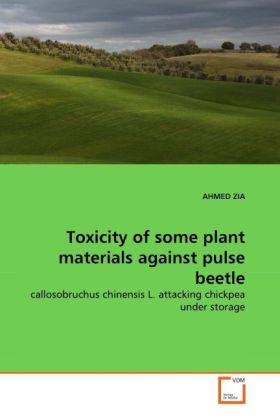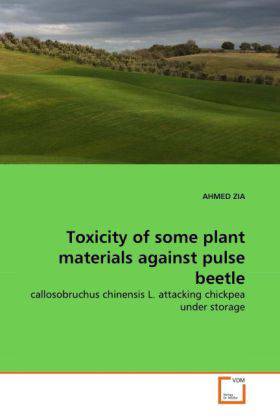
- Afhalen na 1 uur in een winkel met voorraad
- Gratis thuislevering in België vanaf € 30
- Ruim aanbod met 7 miljoen producten
- Afhalen na 1 uur in een winkel met voorraad
- Gratis thuislevering in België vanaf € 30
- Ruim aanbod met 7 miljoen producten
Zoeken
Toxicity of some plant materials against pulse beetle
callosobruchus chinensis L. attacking chickpea under storage
Ahmed Zia
Paperback | Engels
€ 48,45
+ 96 punten
Omschrijving
History of using conventional plant materials as bio-pesticides date back to decades but regrettably only niggling work has been done in past in probing new plants or their products with pesticidal properties. This book presents an insight to possible insecticidal potential explored out of ten indigenous plant materials in dried form as well as in extracted form against pulse beetle, Callosobruchus chinensis L. Results incurred were subjected to statistical analysis as Completely Randomized Design by using SPSS program version: 11 and Minitab with descriptive statistics and analysis of variance, which revealed some of them as a prominent growth inhibitor however few were declared ineffective. Chemical analysis was carried out for chickpea variety as well as for all the treatments. To authenticate obtained results, correlation between chemical composition of plant materials and all parameter of trails was made at alpha 0.01 and alpha 0.05 levels which provides splendid guideline for stored insect & pest management programmes.
Specificaties
Betrokkenen
- Auteur(s):
- Uitgeverij:
Inhoud
- Aantal bladzijden:
- 112
- Taal:
- Engels
Eigenschappen
- Productcode (EAN):
- 9783639342857
- Verschijningsdatum:
- 27/03/2011
- Uitvoering:
- Paperback
- Afmetingen:
- 152 mm x 229 mm
- Gewicht:
- 177 g

Alleen bij Standaard Boekhandel
+ 96 punten op je klantenkaart van Standaard Boekhandel
Beoordelingen
We publiceren alleen reviews die voldoen aan de voorwaarden voor reviews. Bekijk onze voorwaarden voor reviews.











